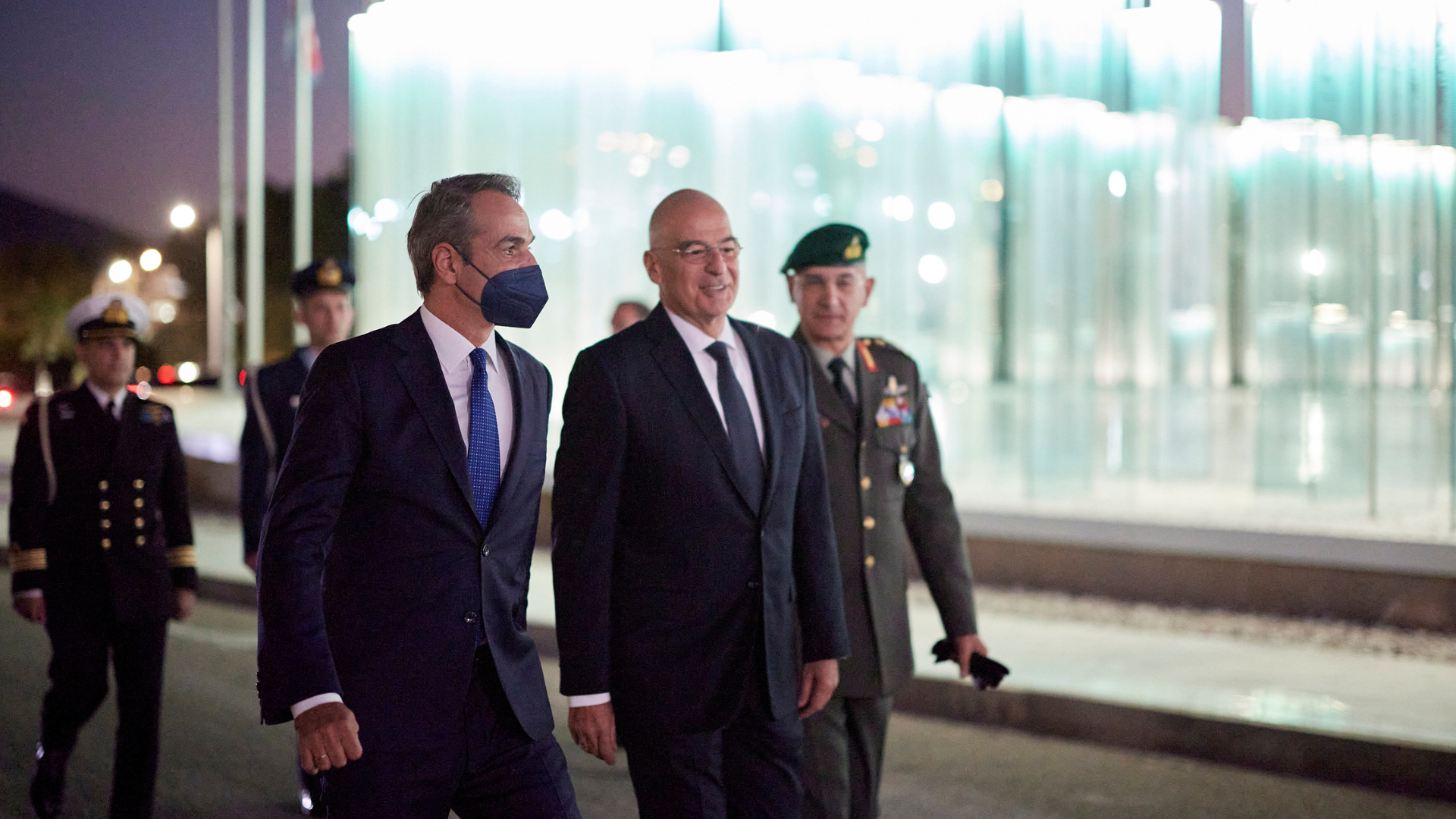Greek Prime Minister Kyriakos Mitsotakis unveiled the new bioclimatic facade of the Ministry of National Defence on Wednesday, October 29, describing it as a symbol of Greece’s historic €28 billion, 12-year Armed Forces modernisation program, the most ambitious in the nation’s history.
He linked the renewal of the military to Greece’s identity and continuity, calling sculptor Kostas Varotsos’ design “a tribute to those who sacrificed for freedom.”
Mitsotakis said the new building represents both “technological progress and remembrance,” reaffirming that defending the homeland remains a “non-negotiable priority.”
The Prime Minister cited Greece’s ongoing military upgrades, including Rafale and F-16 Viper jets, forthcoming F-35 fighters, Belharra frigates, and expanded unmanned systems, noting that “the Armed Forces are being strengthened like never before.”
Η σημερινή μέρα σηματοδοτεί μία ξεχωριστή στιγμή για την εθνική μας άμυνα, αλλά και για την εικόνα της πόλης μας. Στη νέα εικόνα του Υπουργείου και του στρατοπέδου που το πλαισιώνει, καθρεφτίζεται αυτός ο τολμηρός μετασχηματισμός, αναγκαίος εκσυγχρονισμός των Ενόπλων Δυνάμεων. pic.twitter.com/wsFqAkRiED
— Prime Minister GR (@PrimeministerGR) October 29, 2025
The facade, spanning 340 metres with 730 vertical aluminium louvres, improves energy efficiency while housing Varotsos’ “Ark of National Memory,” inscribed with the names of 121,692 fallen heroes.
Defence Minister Nikos Dendias praised the project as one of “uplift and restoration,” adding that the vertical elements “symbolise the confidence and austerity that lead us to the future.”
He also announced a design competition to redesign the Monument to the Unknown Soldier, reinforcing its role as a symbol of national unity.
Two olive groves planted at the ministry, one with 25 trees and another with 28, commemorate Greece’s historic dates: March 25, 1821, the start of the War of Independence, and October 28, 1940, the day Greece defied fascist invasion.
Source: Ekathimerini.
